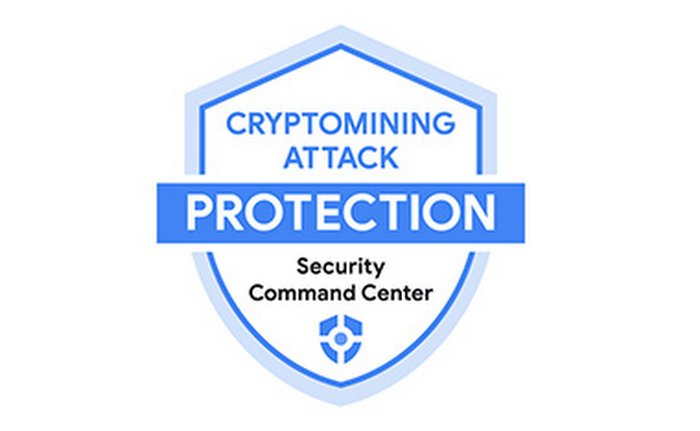Cryptocurrency mining has become a hot topic in recent years, with many people wondering about its costs. If you’re seeking to understand cryptocurrency mining and its costs, you’ve come to the right place. In this article, we’ll delve into the world of cryptocurrency mining and explore the financial aspects involved. From electricity bills to equipment expenses, we’ll shed light on the factors that impact the costs of mining cryptocurrencies. So, let’s dive in and demystify the often complex realm of understanding cryptocurrency mining and its costs.
Understanding Cryptocurrency Mining and its Costs
Cryptocurrency mining, an integral part of the blockchain technology, plays a crucial role in the creation and verification of digital currencies. It involves the process of solving complex mathematical problems using high-powered computers to add new transactions to the blockchain ledger. While mining has garnered significant attention in recent years, many are still puzzled by the costs associated with this process and how it impacts the industry. In this article, we’ll delve into the world of cryptocurrency mining and explore its costs in detail.
The Basics of Cryptocurrency Mining
Before we dive into the costs, it’s essential to understand the fundamentals of cryptocurrency mining. At its core, mining involves the use of computer hardware, specialized software, and electricity to validate and record transactions on a blockchain network.
1. Blockchains and Miners: Blockchains are decentralized networks of computers, and miners are the individuals or entities who participate in the network by solving complex mathematical puzzles to validate transactions. They play a crucial role in maintaining the integrity and security of the blockchain.
2. Proof-of-Work Algorithm: Most cryptocurrencies, including Bitcoin, rely on a proof-of-work (PoW) algorithm. This algorithm ensures that miners invest computational power to solve cryptographic puzzles, proving their work and validating transactions. Successful miners are rewarded with newly minted cryptocurrency.
3. Mining Hardware: Mining requires powerful computer hardware, typically in the form of specialized mining rigs or application-specific integrated circuits (ASICs). These devices are specifically designed to perform the computational tasks required for mining.
4. Mining Software: Miners use specialized software to connect their hardware to the blockchain network. The software enables them to communicate with the network and perform the necessary calculations to solve the mathematical problems.
The Costs of Cryptocurrency Mining
Cryptocurrency mining incurs various costs that miners need to consider before embarking on this venture. Let’s explore the major components of these costs:
1. Electricity: One of the most significant expenses in cryptocurrency mining is electricity consumption. The computational power required for mining, especially in the case of Bitcoin, demands an enormous amount of electricity. Miners must consider the electricity rates in their region and the efficiency of their mining equipment to assess the overall electricity cost.
2. Hardware Costs: Mining hardware can be a substantial investment, especially considering the rapid advancements in technology and the increasing difficulty of mining. The cost of mining rigs or ASICs can vary significantly depending on their computational power and efficiency. Miners need to balance the initial investment with the potential returns to assess the profitability of their mining operations.
3. Maintenance and Cooling: Mining equipment operates under stressful conditions, running continuously at high computational loads. This intense usage can result in wear and tear, requiring regular maintenance and potential replacement of components. Additionally, mining rigs produce a significant amount of heat, necessitating adequate cooling solutions to prevent overheating.
4. Internet and Connectivity: Stable and reliable internet connectivity is essential for mining operations. Miners need to consider the costs associated with internet service providers and the required bandwidth for efficient data transmission between their mining equipment and the blockchain network.
5. Operational Costs: Mining operations also incur additional operational expenses, such as space rental (if mining farms are used), security measures to protect the equipment, and insurance coverage.
Factors Affecting Mining Costs
Several factors influence the costs associated with cryptocurrency mining. Understanding these factors is crucial for miners to make informed decisions and optimize their operations:
1. Network Difficulty: The difficulty level of mining adjusts dynamically to maintain a consistent block generation time. As more miners join the network, the difficulty increases, requiring more computational power and, consequently, higher energy consumption.
2. Cryptocurrency Price: The price of the mined cryptocurrency directly impacts mining profitability. Higher prices increase potential returns, offsetting the operational costs incurred during mining. However, volatile markets can introduce significant uncertainties.
3. Energy Efficiency: Mining operations can become more cost-effective by using energy-efficient hardware and optimizing mining algorithms. Energy-efficient equipment consumes less electricity for the same computational power, reducing overall costs.
4. Regulatory Environment: Regulatory frameworks around cryptocurrencies and mining can vary significantly across jurisdictions. Some countries offer favorable conditions by providing tax incentives or low-cost electricity for mining, while others impose strict regulations that increase operational costs.
Calculating Mining Profitability
To determine the profitability of cryptocurrency mining, miners can use various metrics and calculators. Some key metrics include:
1. Hashrate: The hashrate represents the computational power of a mining rig or network. It measures the number of calculations the hardware can perform per second. Higher hashrate generally leads to higher mining rewards.
2. Block Reward: Each time a miner successfully solves a block, they receive a reward in the form of newly minted cryptocurrency. The block reward varies across different cryptocurrencies.
3. Electricity Cost per kWh: Miners need to calculate their electricity costs per kilowatt-hour (kWh) and consider the energy consumption of their mining equipment. This enables them to estimate the electricity expenses associated with their mining operations.
4. Overall Operational Costs: Miners should factor in all the operational costs discussed earlier, including hardware, maintenance, cooling, internet, and other related expenses.
By inputting these metrics into mining profitability calculators, miners can assess the potential returns and determine whether mining a specific cryptocurrency is economically worthwhile.
Understanding cryptocurrency mining and its costs is crucial for anyone interested in participating in this evolving industry. By grasping the basics of mining, recognizing the associated costs, and considering the factors that affect profitability, miners can make informed decisions about their mining operations. Mining cryptocurrencies can be a rewarding endeavor, but it requires careful consideration of the costs and potential returns. As the crypto landscape continues to evolve, staying informed about technological advancements, regulatory changes, and market trends becomes paramount for successful mining ventures.
Cryptocurrency Mining For Dummies – FULL Explanation
Frequently Asked Questions
Frequently Asked Questions (FAQs)
What is cryptocurrency mining?
Cryptocurrency mining is the process of validating and recording transactions on a blockchain network. Miners use powerful computers to solve complex mathematical problems which secure the network and enable the creation of new digital coins.
How does cryptocurrency mining work?
Cryptocurrency mining involves miners using specialized hardware to solve intricate mathematical algorithms. By successfully solving these algorithms, miners verify transactions and add them to the blockchain, thereby earning rewards in the form of new cryptocurrency coins.
What are the costs associated with cryptocurrency mining?
The costs of cryptocurrency mining include electricity expenses, mining hardware costs, cooling systems, internet connectivity, and maintenance. These costs can vary depending on factors such as the type of cryptocurrency being mined, the mining difficulty, and the mining equipment efficiency.
Is cryptocurrency mining profitable?
The profitability of cryptocurrency mining depends on several factors, including the price of the mined cryptocurrency, the cost of mining equipment and electricity, and the mining difficulty. It is essential to consider all costs and assess market conditions before determining the profitability of mining.
What is the energy consumption of cryptocurrency mining?
Cryptocurrency mining requires a significant amount of energy. The energy consumption depends on various factors, including the type of cryptocurrency, the mining hardware efficiency, and the overall network hash rate. It is important for miners to consider the environmental impact and energy costs associated with mining.
Can I mine cryptocurrencies with my personal computer?
Mining cryptocurrencies with a personal computer is not recommended for most cryptocurrencies. The mining difficulty has significantly increased over the years, making it more difficult for personal computers to compete with specialized mining hardware. Specialized mining equipment provides a higher chance of profitability.
How long does it take to mine a cryptocurrency?
The time it takes to mine a cryptocurrency depends on several factors, including the mining hardware’s processing power, the mining difficulty, and the network hash rate. Some cryptocurrencies have shorter block times, resulting in faster mining, while others may take longer.
Are there any risks involved in cryptocurrency mining?
Yes, there are risks associated with cryptocurrency mining. These risks include the volatility of cryptocurrency prices, the potential for hardware failure, the emergence of more advanced mining technology, and regulatory changes that may impact the mining landscape. Miners should conduct thorough research and stay updated on industry developments.
What happens when all the cryptocurrency coins have been mined?
Once all the cryptocurrency coins have been mined, miners will no longer receive mining rewards in the form of new coins. However, they may still earn transaction fees for validating and adding transactions to the blockchain. The ecosystem will then rely on transaction fees to incentivize miners and maintain the network’s security.
Final Thoughts
Cryptocurrency mining is a complex process that requires powerful hardware and consumes a significant amount of energy. As a result, the costs associated with mining can be substantial. Understanding cryptocurrency mining and its costs is crucial for anyone considering getting involved in this field. By comprehending the expenses involved, individuals can make informed decisions and manage their resources efficiently. Delving into the world of cryptocurrency mining necessitates a clear understanding of the financial implications and the commitment required. Educating oneself about the intricacies of mining costs ensures a more informed approach to this potentially lucrative endeavor. So, understanding cryptocurrency mining and its costs is essential for success in this competitive landscape.



